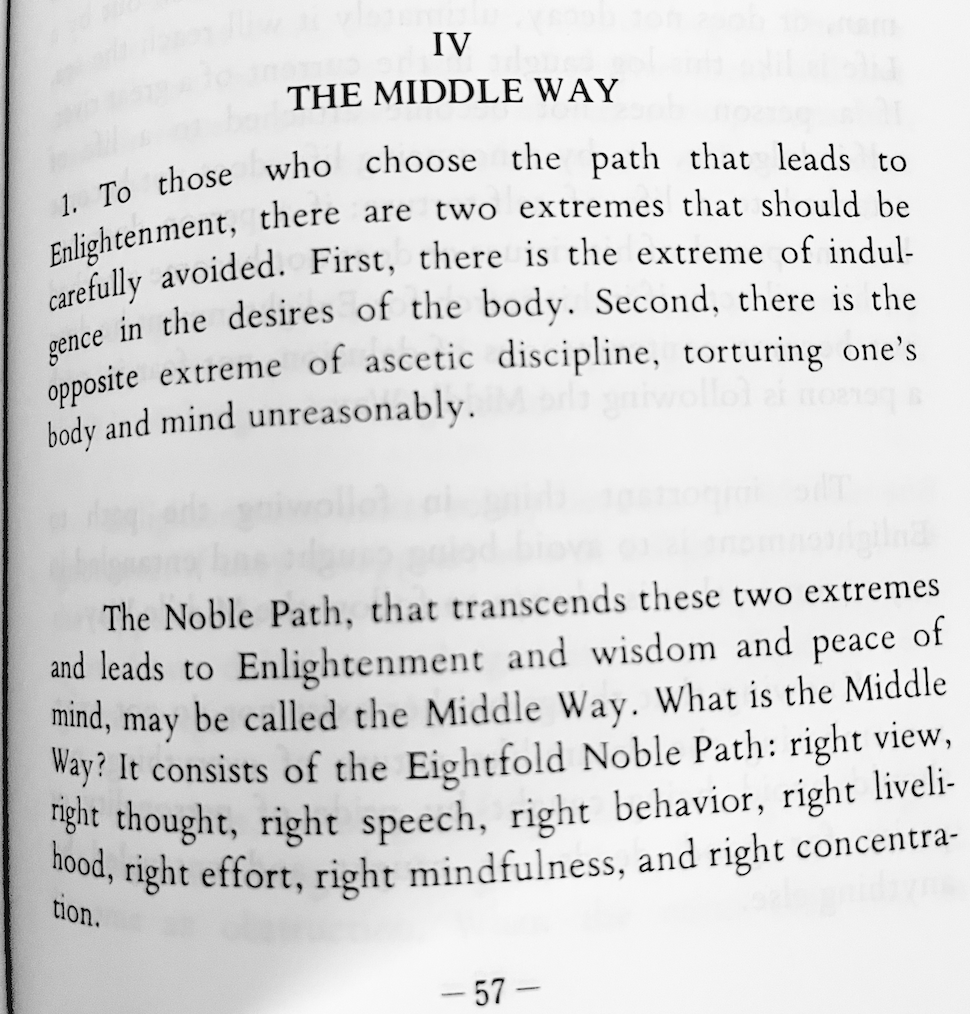I would like to use Buddha’s learnings. (extracted from Popular Deities of Chinese Buddhism)
The Buddha asked a monk who was reciting a sutra:
‘How did you find it when the strings were too loose?
No sound is possible. was the reply.
How when the strings were too tight?
They crack.
How when they were neither too tight nor too loose?
Every note sounds in its proper tone.’
In this sense the title of the post is referring to the middle path way. This middle way is left for interpretation because people have different notions of extremes. If you’re not sure which would be the middle way, consider what would be the extremes of your situations, mind that these are not necessarily only two and also not necessarily as linear – at the different ends of one line perceived. Then consider the actions which would most likely not get you anywhere near the negatively perceived extreme (do be aware that it’s a perception but don’t deny common sense morality like harming others or not doing to others what you’d find unfair if done to you) . Also start to ask if the positive extreme is not deluded, if it’s healthy, or even if it’s actually what you want.
They say things are more enjoyable when done occasionally than say every day or several times a day. Things can start to be a routine, so new interesting things in contrast to routine interesting things seem usually more appreciated. Staying off for a while – missing the activity, you build anticipation and that then leads to enjoying the next experience in a more full minded way.
Still this perspective can lead to another extreme. So many times when trying to stay away from an extreme actually odds lean to go to another extreme. It seams we tend to have a binary consciousness, maybe that way it’s easier to identify extremes, specially negative ones. The negative extremes seem more popularized (unfortunately), and I guess we did evolve to be on the lookout for negativity for survival purposes.
Update:
“Middle Path” may be misunderstood as equivocal. In fact Buddhism is not as such. “Middle” means neutral, upright, and centered. It means to investigate and penetrate the core of life and all things with an upright, unbiased attitude. In order to solve a problem, we should position ourselves on neutral, upright and unbiased ground. We investigate the problem from various angles, analyze the findings, understand the truth thoroughly, and find a reasonable conclusion.

Update2. Actually, do look at the possible positive extreme(s), you might find it is what you want, it’s healthy to want the best for your self and others thus this positive extreme is worth exploring to the maximum, that is probably where we all want to get, and we all deserve it. Do mind the delusion, but mind it in a sense where you realize difficulties and get prepared, many or most things, like Rome, are not build in a day (or easily).
It’s not about the middle way. It’s about the right way. Buddha and the monk are not telling you to go for the middle way, not what is tight nor loose.
I agree in the sense that ultimately, actually, what we’re looking for is “the right way”. But put into context, this being a “forget me not”, it’s meant for times when ‘the right way’ is unclear or one can easily disregard and go into one of the extremes where either the sutra’s chords make no sound, either they brake.
In this sense, the middle path is a way of choosing ‘the right way’ (or right path) in a (as much as each is able) full minded manner. My notice to the extremes being a relative manner – is meant to aid growth of consciousness about the diversity in the world which takes everything to a new level.